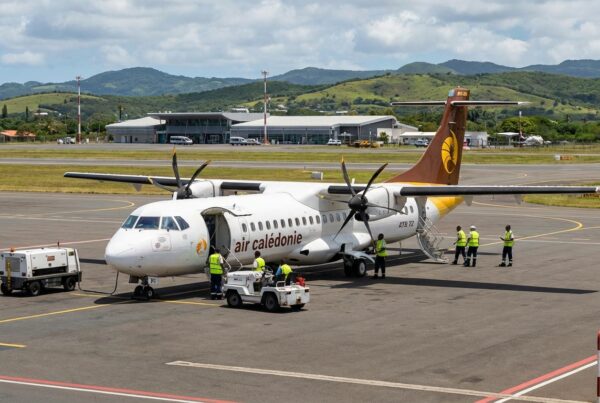Waiting for a flight without losing your connection is no longer a luxury reserved for first class: the promise of a in-flight broadband is redefining the air travel experience for all passengers. The massive arrival of Satellite Wi-Fi on fleets is changing both usage and the commercial stakes for companies.
Why satellite Wi-Fi is a game-changer on board
In-cabin connectivity is no longer just an additional service; it is becoming a criterion of choice for business travelers and tourists alike. Visit In-flight Wi-Fi available via satellite constellations, it is possible to deliver faster, more stable connection than traditional systems. For airlines, it's a lever for loyalty, commercial differentiation and on-board monetization. Flywest reports that several carriers are accelerating the installation of these systems, heralding widespread adoption in the coming months.
Impact on the passenger experience
Passengers now expect digital continuity from the ground to 30,000 feet: seamless videoconferencing, streaming, smooth navigation. The in-flight broadband enables us to offer value-added services such as live streaming, enhanced entertainment solutions and productivity tools for business travellers. Beyond comfort, this improves the overall perception of travel and customer satisfaction.
Operational and commercial consequences for companies
The installation of satellite systems represents a technical and financial investment, but the potential benefits are manifold. Airlines can differentiate their offerings by offering free Wi-Fi for certain categories of passenger, premium packages or integrated corporate services. From an operational point of view, reliable connectivity also facilitates telemetry, predictive maintenance and communication between crew and ground, optimizing flight safety and efficiency.
Technical and regulatory challenges
The widespread use of Satellite Internet on-board systems comes up against a number of obstacles. Hardware integration (antennas, cabling, power supply) must comply with strict aerodynamic and safety standards. National and international authorizations and certification by aeronautical authorities remain critical steps. On the commercial front, the management of roaming agreements, flow neutrality and the protection of passenger data require clear standards.
Environmental issues and energy consumption
Installing additional antennas and equipment affects the aircraft's power consumption and slightly modifies aerodynamic drag. Manufacturers and suppliers are working on lighter, more energy-efficient solutions to limit environmental impact. Operators will need to assess the cost-benefit balance, taking these parameters and passenger demand into account.
What strategies for airlines and airports?
Companies wishing to capitalize on this revolution need to think of connectivity as a core element of their commercial offering. Modular packages, partnerships with digital service providers and clear communication on the Wi-Fi offer are becoming essential. Airports, for their part, can make the most of better-connected connections and offer complementary services, transforming the stopover period into a commercial opportunity.
Future prospects
As satellite networks become denser and installation costs decrease, the In-flight Wi-Fi will become the standard for most short- and medium-haul routes, and later for long-haul routes. Innovation will focus on antenna optimization, intelligent bandwidth management and the integration of on-board applications (teleworking, e-health, immersive content). Companies that invest early will gain a significant competitive advantage.
Key information
The deployment of the Satellite Wi-Fi transforms the travel experience by offering in-flight broadband comparable to a terrestrial connection. According to FlywestWith the advent of the new generation of aircraft, the ramp-up of fleet installations marks a strategic turning point for airlines.
Benefits include improved passenger satisfaction, new sources of commercial revenue and operational gains via telemetry and connected maintenance.
The obstacles remain technical, regulatory and environmental: certification, hardware integration and energy consumption all need to be optimized.
Carriers and airports need to anticipate these developments by building appropriate commercial offers and technological partnerships to remain competitive.




